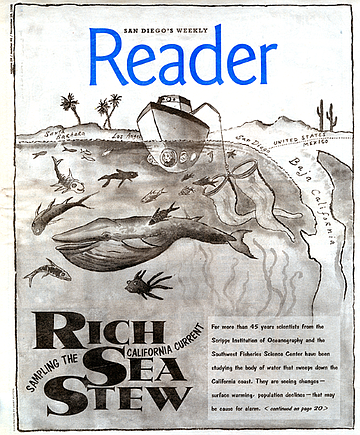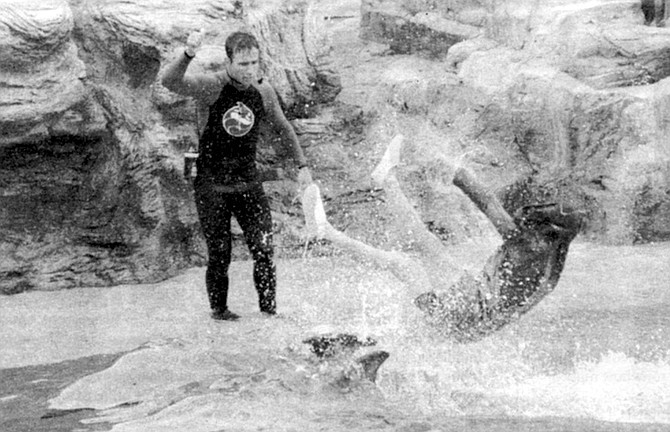
The dolphins are supposed to get close to the target before turning, to give the trainer time to get steady on her feet, but on the first run they turn early and Bakey falls off.
Douglas Whyknott, who wrote for the Reader from 1995 throiugh 1998, is an 11th-generation Cape Codder. He played blues and jazz piano and formed the Whynott Boogie Trio after studying blues piano with Sammy Price, known as the king of boogie-woogie, in Harlem, New York.
He is the author of Following the Bloom—Across America with the Migratory Beekeepers (1991); Giant Bluefin (1995); A Unit of Water, A Unit of Time—Joel White's Last Boat (1999); A Country Practice—Scenes from the Veterinary Life (2004); The Sugar Season: A Year in the Life of Maple Syrup, and One Family's Quest for the Sweetest Harvest (2014)
Stories Whyknott wrote for the Reader:
- Bill Hoffman says there are husbandry sessions in which, amazingly, the animals present their tail flukes to have blood samples drawn (they are also able to urinate on command — one wonders what the signal is for that). There are learning sessions, when the training is done. There is playtime, and feeding time, and there are “relationship sessions." (February 26, 1998)
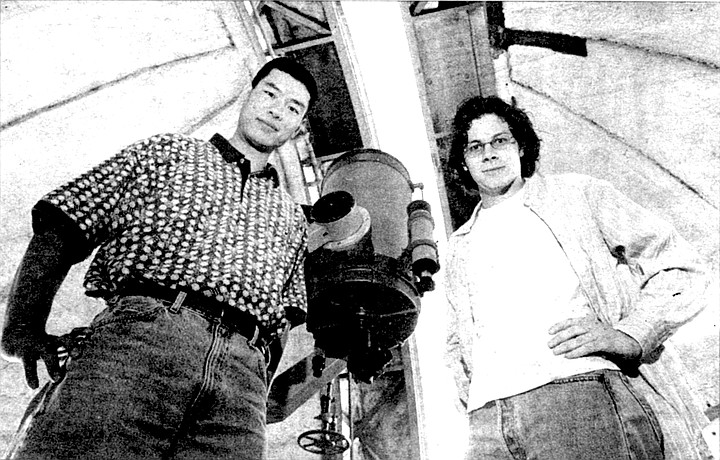
Limin Lu and Ben Oppenheimer. Ben Oppenheimer was working on his dissertation, hunting for more brown dwarfs, studying all the stars within 25 light-years of earth. There were about 180 of them.
- A phone call came in from Rick’s wife—she wanted to say goodnight. “My beautiful wife,” he said when he hung up, smiling. He had a job in astronomy, yes, but he’d sacrificed the goodnight kiss. (December 11, 1997)
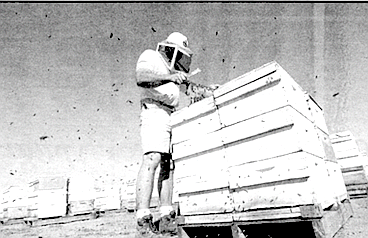
In San Diego County a hive has to be located 100 feet from a road, 600 feet from a dwelling.
Photo by Sandy Huffaker, Jr.
- There are about 30,000 beehives in San Diego County, and just now, Alan Mikolich and I are standing amid 140 of them. Mikolich is a commercial beekeeper, one of the dozen or so in San Diego County. For his entire adult working life, from the time he was a teenager, Mikolich has worked with bees — six or seven days a week, 10 to 12 hours a day, year-round — moving beehives. Fixing beehives, taking the honey out of beehives. (May 15, 1997)
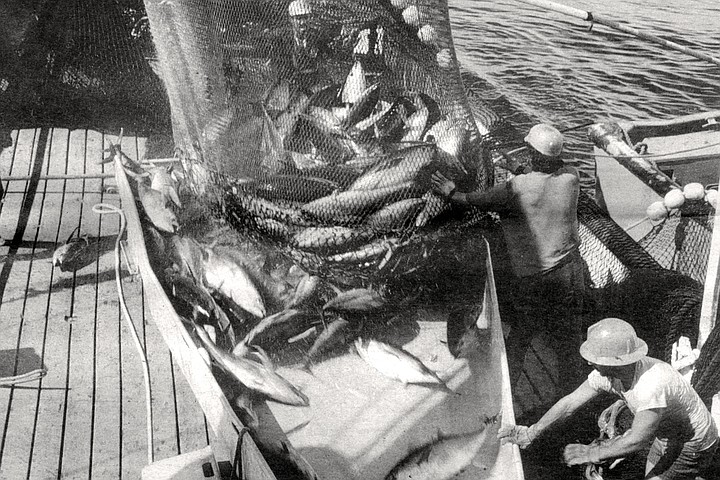
A catch is hauled aboard a San Diego tuna seiner. Many of the older generation think that the dolphin activists “ruined a beautiful industry."
- In 1960 San Diego was the most active tuna port in the world. The fleet consisted of about 135 boats. At any given time, 30 or 40 were tied up at the Embarcadero, in port between trips to the tropical grounds, to places as distant as the Galapagos Islands. (May 23, 1996)
- Over the centuries, two predominant ingredients of the stew have been anchovies and sardines. At about A.D. 575, the anchovy population in the southern California Current was 5 million metric tons (11 billion pounds) but then nearly disappeared shortly before 1300. Since 1970 populations have ranged between 1.6 and 0.3 million metric tons. (November 16, 1995)
- If a photograph dies and goes to heaven, it might end up here in the breathable vault at the Museum of Photographic Arts in Balboa Park. The prospect for immortality is good, since the temperatures is right, about 60 degrees, and the humidity is right at 40 percent, and the air is fresh, since the vault takes a breath every minute of so. Here at the breathable vault a photograph outlives its subject, outlives the photographer, outlives us all, I suppose. (October 16, 1997)
 Facebook
Facebook
 X
X
 Instagram
Instagram
 TikTok
TikTok
 Youtube
Youtube




